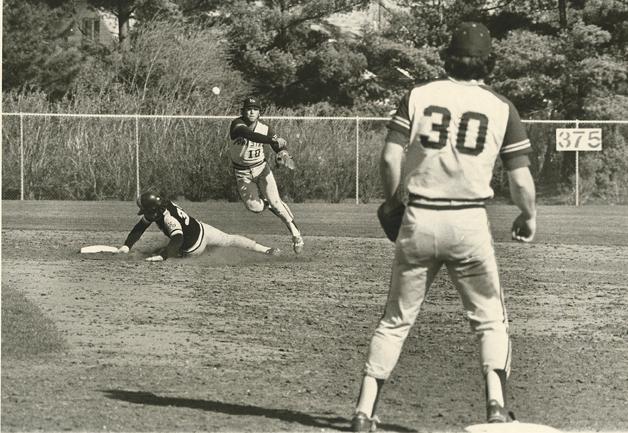Editorial: Title IX discriminates against men as well as women
Courtesy photo: Iowa State University Library/Special Collections Department
The ISU baseball program dates back to 1892 including College World Series appearances in 1957 and 1970.
October 17, 2013
In the 1960s and 1970s, our nation established several guidelines by which we were to construct a more fair society. Being a time of extreme civil rights activism, this era was contained more strides toward equality than any other.
One of these guidelines was Title IX of the Educational Amendments of 1972, colloquially called Title IX. The law states: “No person in the U.S. shall, on the basis of sex be excluded from participation in, or denied the benefits of, or be subjected to discrimination under any education program or activity receiving federal aid.”
When applied to financial aid and educational aspects of universities, Title IX has done great things. This legislation has helped narrow the gap between male and female college graduates, especially in what had previously been considered masculine fields of study.
In the years following Title IX’s implementation, great steps were taken toward equality in academia. By 1994, women were receiving 34 percent of medical degrees, a huge advancement from the 9 percent they were receiving before Title IX. Similarly, percentage of law degrees earned by women increased from 7 percent to 43 percent. Obviously, this legislation was (and in academic worlds, still might be) necessary.
However, Title IX’s application to the athletic side of state universities has caused more than a little controversy over the years. Like in education, this legislation was initially beneficial. Title IX made it so that schools must fund men’s and women’s sports equally, so that no person could be denied participation in a sport at which they were skilled based on sex.
Now, more than 40 years later, it might be time to re-evaluate the necessity of Title IX in collegiate sports. Iowa State currently has six men’s sports and 10 women’s sports. This difference is a result of the much larger funding that goes into sports like football or men’s basketball, necessitating a wider range of women’s sports in order to have equal funding.
The problem with this is that now, Title IX is backfiring, as male athletes are made unable to participate in particular sports. For example, Iowa State’s baseball team, which had existed as early as 1892, played its last season in 2001. As the beloved American pastime, it was a shame to see baseball go. It is more of a shame that capable baseball players are no longer funded and supported by the university, due to “budget cuts” that were a result of equalizing men’s and women’s sports at Iowa State.
Another example is Cyclone Hockey. The team has enjoyed success for several years, and their games are attended by many college students. However, due to funding limitations, they are not an official ISU collegiate sport (and probably won’t be any time soon).
Though there are both baseball and hockey clubs teams at Iowa State, it isn’t right that such talented individuals do not see the official support and fanfare provided to other ISU sports. At this point, men are suffering the same fate that Title IX attempted to save women from: gender discrimination.
Because of the restrictions created by Title IX, men are now unable to play in collegiate sports for which they are highly qualified. The necessity of equal funding for men’s and women’s sports, paired with the inevitably massive funding that goes to football, prevents worthy men’s sports from being fully college-sponsored, funded and supported.
In the greater scheme of gender equality, collegiate sports might seem insignificant. However, if we overlook the reverse discrimination now being served to male athletes, we have hardly learned our lesson.
Forty years down the road from Title IX’s original implementation, we need to step back and consider adjusting the rules established by this legislation in university athletics.
Title IX’s purpose is noble, but when it gets in the way of equality for men or women, it is time to recalibrate our need for it.







